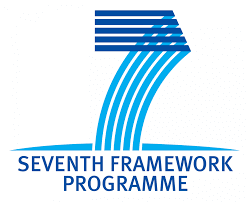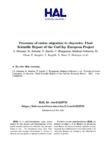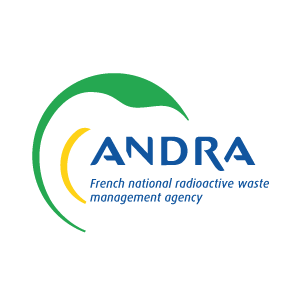CATCLAY: Processes of cation migration in clayrocks
The four-year long CATCLAY project aimed to improve models of radioactive waste disposed of within geological deposits. By undertaking modelling and controlled experiments that mimicked the behaviour and movements of radioactive atoms, a new model of radioactive cation diffusion through clayrock was developed and validated. The improved understanding of cation diffusion gained over the project has helped enhance the safety and effectiveness of radioactive waste management.
Overview
Project Dates: 01/06/2010 – 31/05/2014
Project Status: Finished
Project Website: N/A
Much effort has been invested over the last few decades to measure, understand and model diffusion-driven transfer of radioactive elements in saturated natural or engineered low-permeability porous materials containing large proportions of permanent negative charge swelling and/or non-swelling clay minerals. The aim of this work was to provide support for national radioactive waste disposal program safety cases. Building upon this foundationary research, the CATCLAY project aimed to improve models considering the sorption of radioactive waste disposed of in clayrock.
A ‘bottom-up’ scientific approach was employed in which simpler, analogous systems (‘pure’ illite) were experimentally studied and modelled. This was followed up with work that verified the transferability of those results to more complex materials (i.e. the clayrocks under consideration for hosting radioactive waste disposal facilities). Results from the CATCLAY project allow for a better understanding of the migration of strongly-sorbing tracers through low permeability ‘clayrock’ formations. This in turn supports models used to predict radionuclide migration through such rocks, improving confidence that they are scientifically sound.
Objective
The CATCLAY project focused on discovering if the migration of actinides and other strongly sorbing radionuclides in clayrock could be predicted by coupling models of:
- their sorption equilibria on representative clay minerals; and
- the diffusion-driven mass transport of radionuclide sorbed and dissolved species in compacted masses of those clay minerals.
Based on the assumption that speciation models for cation sorption on clay materials (illite, clayrock) developed from the results of measurements in dispersed material systems were also valid for corresponding compacted material, the CATCLAY project had the following specific objectives:
- To extend, consolidate and test theoretical and numerical models against experimental data that link the thermodynamic states of electrostatically interacting cations (monovalent, bivalent, trivalent), relative to charged clay surfaces, with their corresponding diffusion-driven mobility.
- To evaluate whether or not the above model framework, after inclusion of appropriate representations of surface complexation reactions for Zn2+ and Eu3+ with illite edge sites (based on available literature data and results of specific measurements), is appropriate for modelling diffusion driven transport of these species.
- To determine / model the effects of the structure of compacted clay and clayrock (mineral-porosity, discontinuities, spatial heterogeneity) at the mesoscopic scale (< mm) on diffusion driven transport of strongly-sorbing cations.





